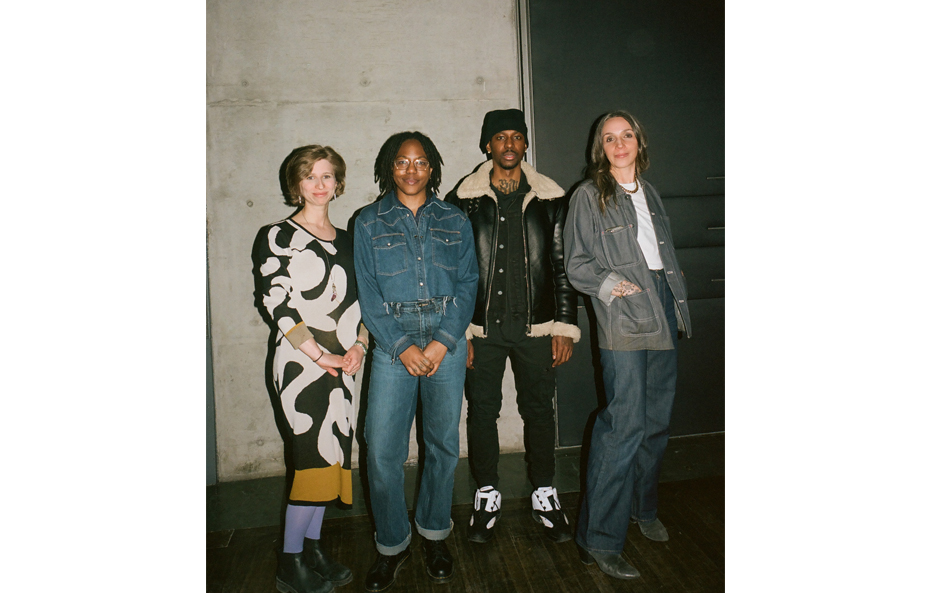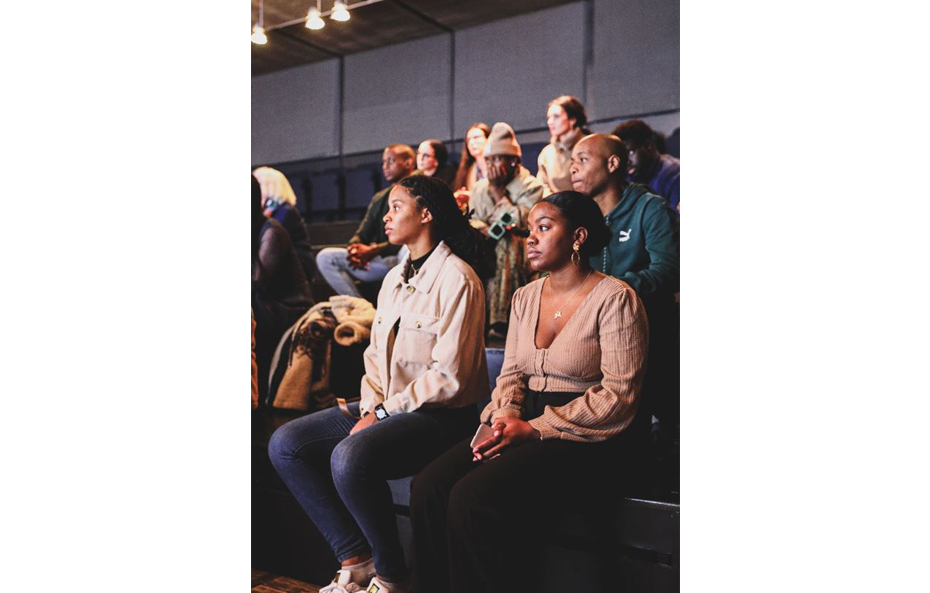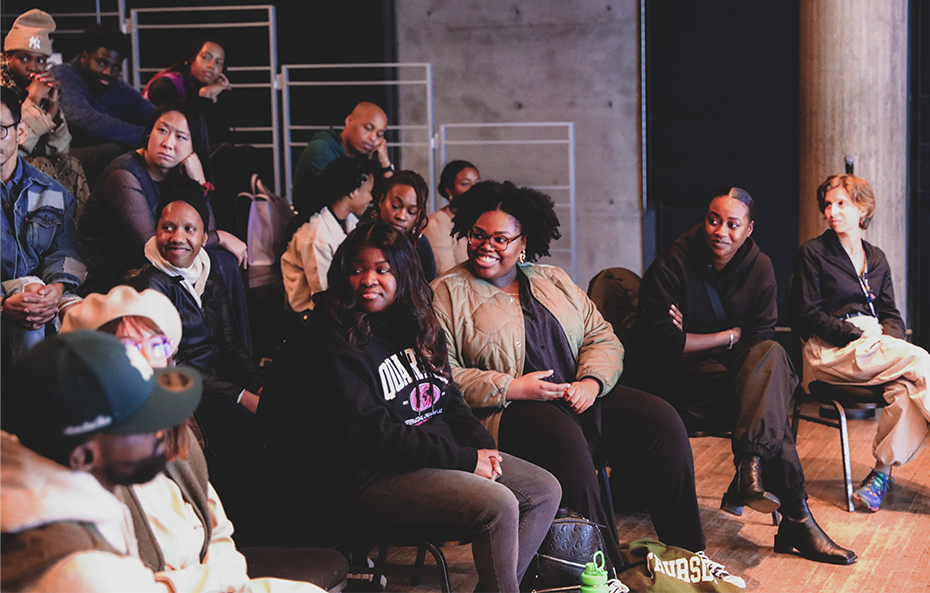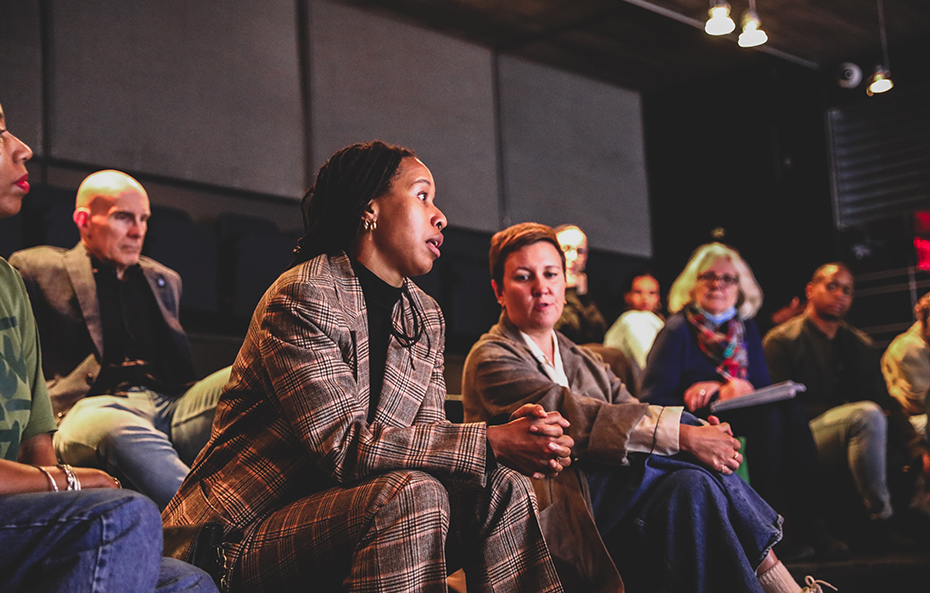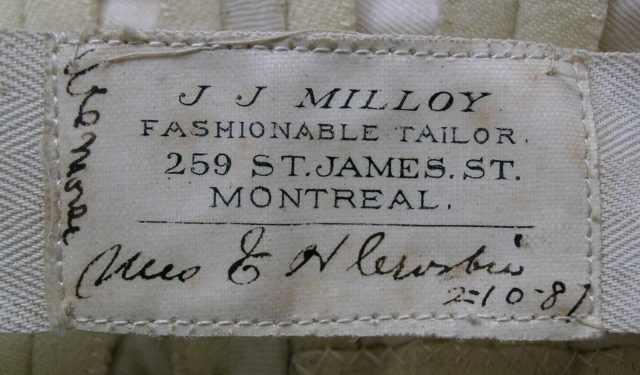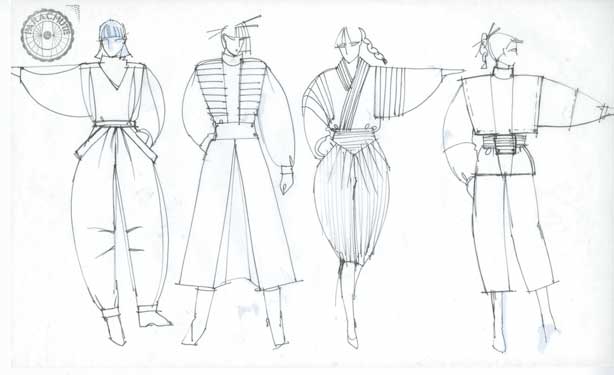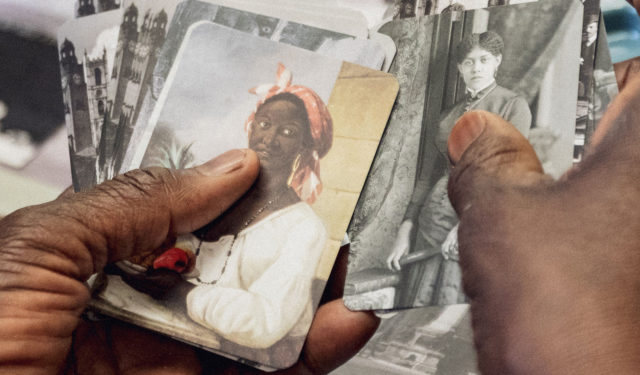Never Was Average and the art of conversation
Learn how Never Was Average uses the power of conversation to bring people from different communities together.
August 17, 2023
There’s lots to say about fashion, but when Never Was Average – a group specializing in the creation of artistic and cultural experiences – is leading the debate, it’s sure to go way beyond what meets the eye. Capitalizing on the power of conversation, creative duo Joanna Chevalier and Harry Julmice have been stirring things up at the Museum during several evenings aimed at deconstructing different aspects of fashion: luxury goods, cotton, streetwear, denim…
As facilitators of these discussion workshops, which blend art and cultural mediation, the members of Never Was Average have taken a strikingly original and widely inclusive approach. Here they are conversing again, this time with Alexis Walker, Associate Curator, Dress, Fashion and Textiles, and Clara Chouinard, Project Manager, Education, Community Engagement and Cultural Programs at the McCord Stewart Museum, as they reflect on this rich collaboration.
Never Was Average is known for the conversations it facilitates in a variety of settings. What gave you the idea of holding one at the McCord Stewart Museum?
Joanna: Aware of our interest in anything to do with photography and fashion, the McCord Stewart Museum invited us to think about how we might work with them. Our approach is entirely community-based. We’re there to exchange, to use conversation to change attitudes, and we do it by being creative. It’s not at all our role to say what’s right or wrong, but simply to reveal different possibilities and ways of seeing things.
Harry: What we do is create a new reality for the community. When I say a new reality, I mean encouraging direct access to culture in institutions where basically it wasn’t a smooth and easy path. The Museum gave us a completely free hand. As part of our approach, we ask how this establishment creates a positive environment for our community and, on the flip side, how the community can profit from the institution’s resources.
How did the Museum react to your approach?
Alexis: Museums today are changing. We can no longer see ourselves simply as pillars of authority, we have to be more open to the community. A human-centred approach is a key element of the way museums must evolve. The human being must be at the heart of everything we do. What I like about Never Was Average is the kind of lateral thinking that Joanna and Harry practice. It’s really democratic – we talk. One thing I observed during the discussions is that people know more than they think. I learned things myself from listening to people’s comments. I appreciate having this space to explore another form of learning.
Clara: At Community Engagement we work on co-creation projects with people and organizations outside the Museum, so as to broaden horizons and points of view. Museums in the 21st century must look outwards if they are to grow and remain relevant. The collaboration with Never Was Average plays a key part in this mission. When they’re on site, a kind of merging occurs between the Museum network and Never Was Average’s. These gatherings encourage us to question things we thought were settled, explore them deeper and take them further.
Harry: It’s important to point out that we don’t come from the world of museums. We don’t see things in the same way. Our approach is human, it focuses on individuals.
Our aim is to find ways to use an establishment to create a positive environment for our community. In marginalized, under-privileged communities there are few places where people can simply practice critical thinking, explore, interpret. It’s difficult to do it in everyday life, because we’re constantly on the watch. When we use our brain to interpret works, we force it to practice critical thinking. Then later, when we’re faced with problems, we’re able to use creativity to come up with solutions.
What happens at these gatherings?
Joanna: We choose an object from the Dress, Fashion and Textiles collection, and we talk about it during a conversation with members of the public. It’s very simple!
This project is specifically about fashion: but anyone can join in, whether they’re interested in the subject of not, since we’re all fashion consumers to a degree. Also, I studied fashion, and I think it’s important to attract people who are interested in it but may not have access to this type of collection.
The conversations are always enjoyable. The public is really diverse, and people join in the discussion. The dialogue helps everyone to see things differently, and this is the value of projects like these in the long term.
Harry: What surprises me each time is how many possible ways there are to approach the subject. The challenge for us, during the preparation process, is to narrow it down to just a few. During the conversation, participants sometimes bring these issues up before we mention them, which shows that there’s knowledge out there, but that it’s scattered throughout the communities.
Also, people are generally used to information being transmitted in an authoritative way – a few speak and everyone else listens. They’re surprised when we propose a completely different approach. We realize from the reactions of people taking part that it’s something unique. I’m eager to see what we’ll be able to come up with in the future and how people will participate.
Clara: The Museum is the caretaker of its collections. If those collections don’t come alive through the eyes of members of the public, we’re wasting our time – which is what’s behind the idea of making them accessible and bringing them to life through discussion. Gatherings led by Never Was Average are all about openness, sharing, exchange – they’re an opportunity to grow. There’s a very special energy during these evenings. It’s been especially exciting to see regular Museum-goers interacting with the other participants.
Harry: We’re in the process of awakening minds, which really proves the huge importance of these spaces. Our intergenerational approach is designed to bring members of different communities together, people with different viewpoints and ways of understanding.
How do you deal with the historical angle, which can be controversial? How does your approach function within a decolonial vision?
Harry: Museums encompass many histories in their collections, but some are never recounted. Each work represents a history, a story, and we try to uncover it, to take ourselves back to that moment, to what was happening then. You can’t present a magnificent piece dating from another century without talking about the period in which it was created – a period when it would have been impossible for a Black person like me to see such a piece. Presenting objects in this way makes us realize that there are things we know, but there are also many things we don’t know. Our goal is not to provide answers, but to have a conversation and to ask the kind of questions we wouldn’t normally take the time to ask.
Joanna: We have a different way of thinking. One thing we want to be sure to do is question what’s written. What if we dig deeper? We’ve done some research with Alexis, and we’ve discovered other stories and other facts that have not been highlighted. And it’s these we want to talk about.
Alexis: We are currently in a process of decolonization, and there are many internal discussions on the subject. But for myself, it’s a personal matter. Everyone must decide what it means to them. For me, it involves thinking about different things when we look at the collections, taking the time to really observe and talk. For example, we have to ask: what’s missing? What lies hidden behind the obvious story? It’s the hidden histories we’re searching for.
Clara: Among other things, decolonization also means acknowledging that in the past Black communities didn’t have direct or easy access to places like the Museum. We have to admit this and ask ourselves what we can do as individuals to avoid repeating the same mistakes. Another aspect is making sure that we at the Museum are open and available. If we wish to remain a relevant and meaningful place, we have to be representative of the people of Montreal. One way of ensuring this is to make our spaces accessible to those who can attract a more diverse public. It’s great to see Never Was Average taking the Museum by storm! There has to be more like this. Decolonization is a fine word and a fine concept, but ultimately it begins with the relationships we develop and nurture.

